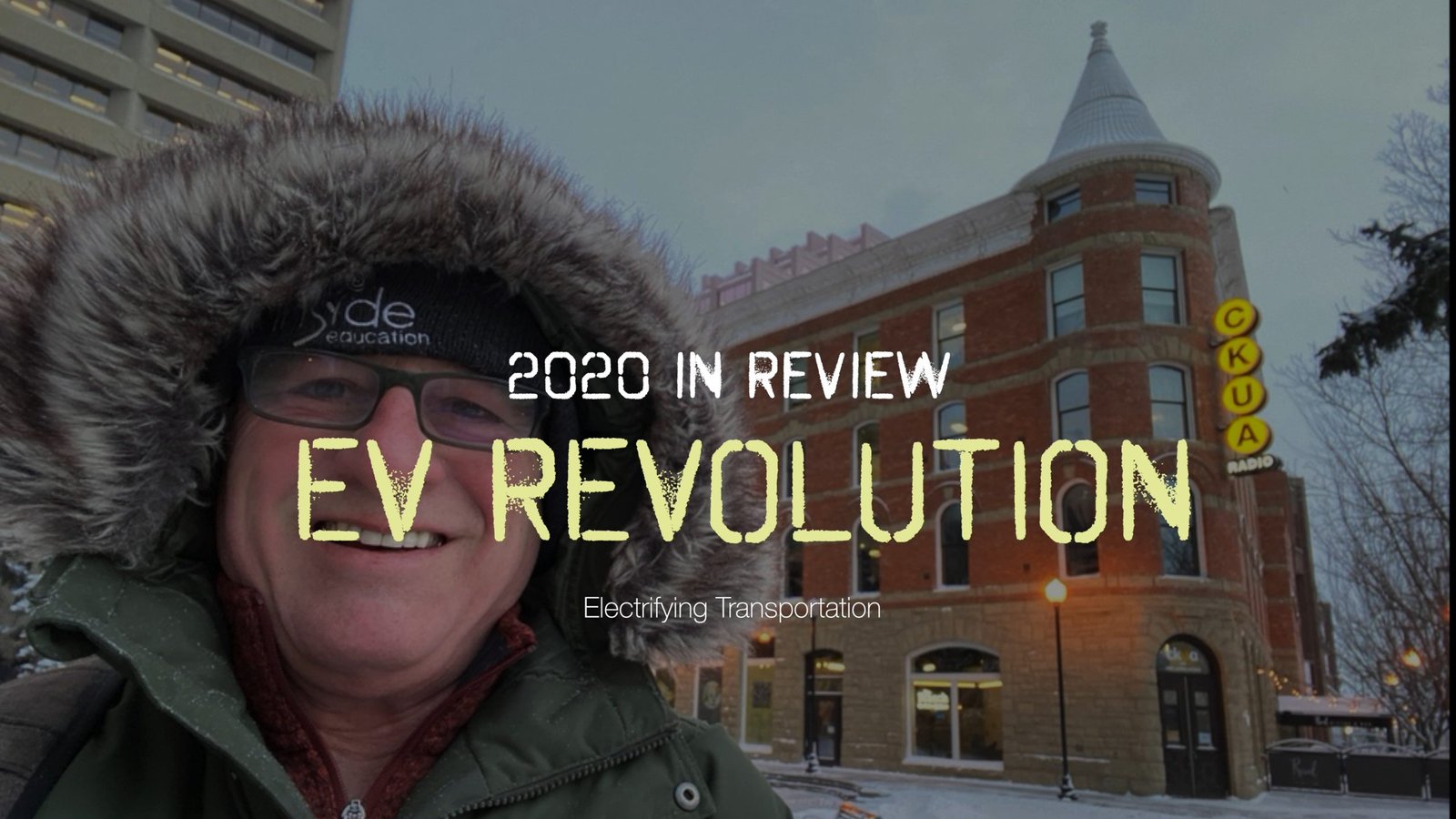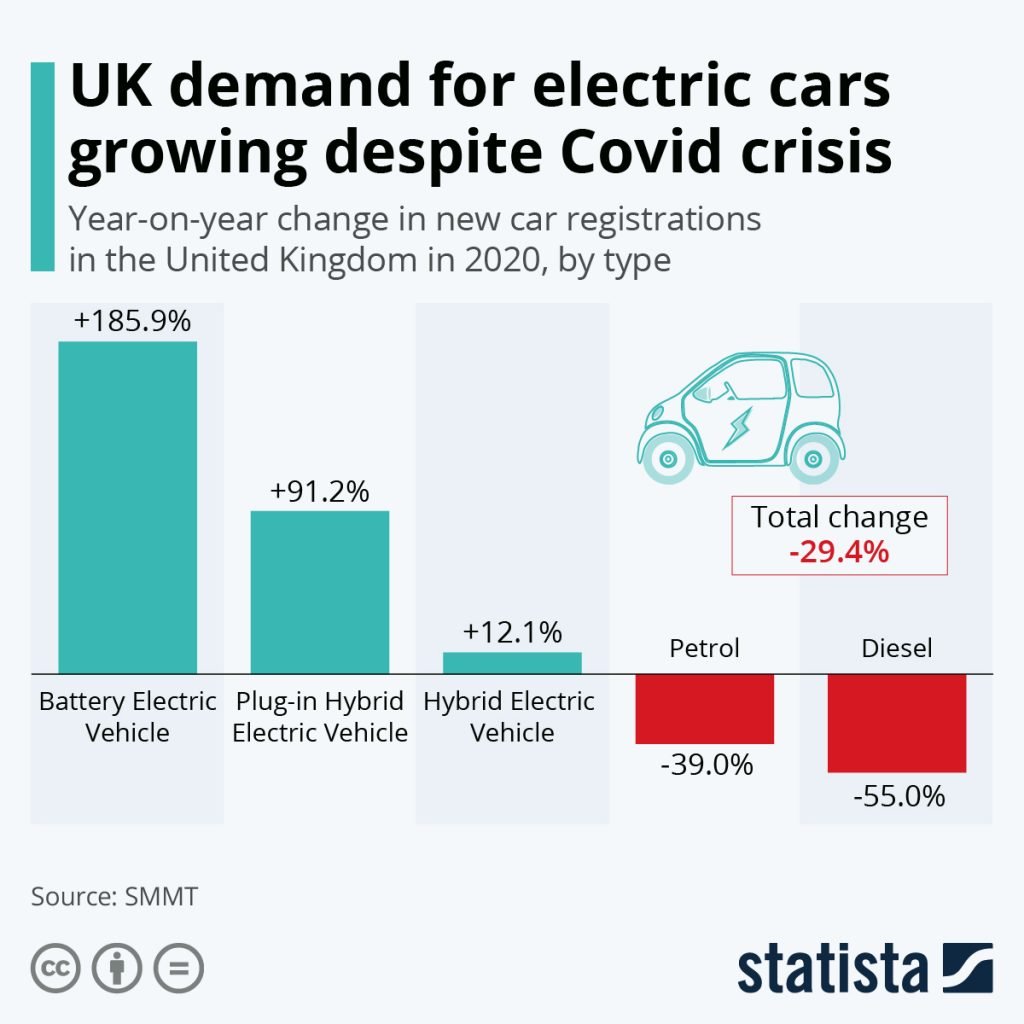By David Dodge, GreenEnergyFutures.ca
Electrify everything. Such is the refrain from those who have modeled the future and know what it will take to build the low carbon economy of the future we need to stay within the 1.5 degree threshold prescribed by the Paris Accord.
Usually the gap between the theoretical and practice is pretty wide. But 2020 may go down as the year when the EV Revolution established a solid foothold.
As we look back on our Green Energy Futures (GEF) stories from 2020 one statement stands out and it comes from Irish multimillionaire Norman Crowley.
$300 billion invested in 700 models of EVs
“If you’re in any way financially astute and you look at the data around electric cars and you think ICE [internal combustion engines] are going to be OK past 2030, you are you are not a good person at judging numbers because all of the graphs are just going in one direction right now,” said Crowley in a lengthly interview with GEF.
Crowley was making the case for his bold assertion that “climate change will be solved by 2030.”
Indeed the auto industry statistics seem to bear out his assertion that ICE days are numbered.
Virtually the entire auto industry has pledged $300 billion towards the development of 700 new models of electric vehicles (EVs) mostly before 2025.
If you missed it we posted our full-length interview with Norman Crowley on our YouTube channel. It’s an eye-popper – give it a listen and hear him make the case that we are on the road to a zero emissions transportation future.
E-Bike redefines possibilities
By David Dodge, GreenEnergyFutures.ca
Electrification is also seriously expanding the utility of the lowly bicycle as a valid form of transportation. We tagged along with Leon Milner on his commute to work in Edmonton to learn why he ditched his car for an e-bike.
“Just look around us. I mean, this is the commute daily on an e-bike, this is a lot nicer than rush hour traffic, that’s for sure,” said Milner as he was riding his bike through Edmonton’s beautiful river valley on his way to his downtown office.
“And then I guess on top of that, just the environmental benefits, the cost savings, the exercise, the fitness. Yeah. It’s just awesome,” he said.
Take an e-bike ride with us in our 2020 story – you just might look at the bicycle differently.
E-bike sales soared in 2020 around the world and part of the reason is they essentially double the viable commuting distance of the bicycle making cycling accessible to less able cyclists and just the ticket to getting around in our sprawling, energy gobbling cities.
In 2020 Edmonton passed its new City Plan which at its heart calls for the create of the 15-minute city by increasing density in the core, facilitating active transportation and electrifying transportation. This was followed by work on an update to Edmonton’s Energy Transition Strategy which seeks to create a carbon neutral city by 2050.
In many cities like Edmonton buildings and transportation each account for about one third of their greenhouse gas emissions.
E-Bus Revolution in Edmonton
In 2020 Edmonton Transit hit the streets with its first fleet of electric buses in a bid to begin building a low carbon transit system.
“Right now we currently have 40 buses that we’ve ordered. We have 33 on site right now,” said Edmonton Transit boss Eddie Robar.
The city is taking a very thoughtful approach to electrification. They custom designed the new artsy Kathleen Andrews Transit Garage with high-speed charging systems, battery storage to help reduce the cost of electricity purchases and a pretty cool rainwater collection system which is used to wash the buses.
Edmonton’s current fleet of buses in about 1,000 and Robar says they now have capacity for 60 e-buses and they are using this opportunity to “look at what the transition of the future looks like.”
Although e-buses are more expensive, it’s a long-term investment that could help the city dramatically reduce operating costs.
“So this offers us a 30 per cent reduction in costs for maintaining the bus itself just to maintain it. And then as well, on top of that, anywhere from 50 to 75 per cent savings in our fuel,” said Robar.
Norman Crowley too waded into the electric vehicle industry in 2020. He started Electrifi an Irish company that is taking the designs of classic sports cars and electrifying them. He started with his own 1963 Stingray.
“And for those car nerds listening it will go from 267 brake horsepower maybe, although I think some of those horses have died over the years, to 2,000 horsepower,” said Crowley with a smile.

In November 80 per cent of all car sales in Norway were battery-electric or plug-in electric. In the United Kingdom new battery-electric car registrations were up 185 per cent in 2020.
There are two photos taken on 5th Avenue in New York, one in 1900 that features all horse and buggies except one car; and the second taken in 1913 that shows only automobiles with only one horse.
Disruption can come quickly and it seems we are in the midst of the electric transportation revolution.



